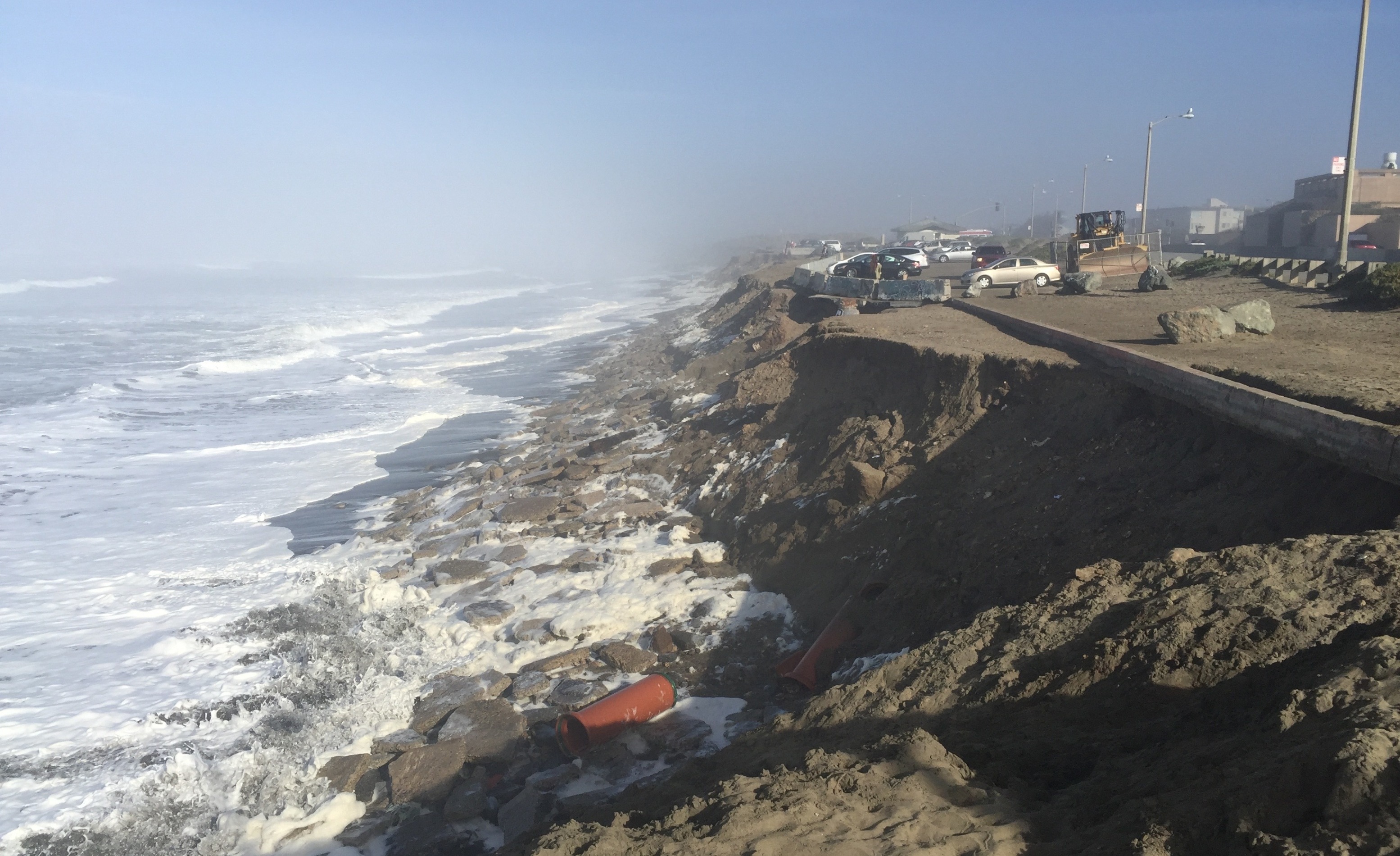
Restore Sloat
Preserve South Ocean Beach for Future Generations
This sea level rise campaign aims to protect and preserve the beach south of Sloat at Ocean Beach, San Francisco, by advocating for nature-based solutions over hard infrastructure to combat the impacts of ongoing sea level rise.
As of early 2024, SFPUC is proposing a project at Sloat that includes removal of the Great Highway Extension and construction of a mile-long ‘buried’ seawall that is intended to protect the underlying wastewater infrastructure.
Surfrider supports removal of the Great Highway Extension because it is highly vulnerable to sea level rise. However, the proposed seawall can be expected to dramatically exacerbate erosion; which would affect the waves, the beach and beach access at Sloat as long as the seawall persists — which could be many decades.
Surfrider has been working to influence SFPUC’s proposal and is advocating for a project redesign that prioritizes dune creation and maintenance, ensuring long-term beach protection and ecological resilience.
To read more about our detailed position and read up on this campaign, check out our blog which is updated regularly.
